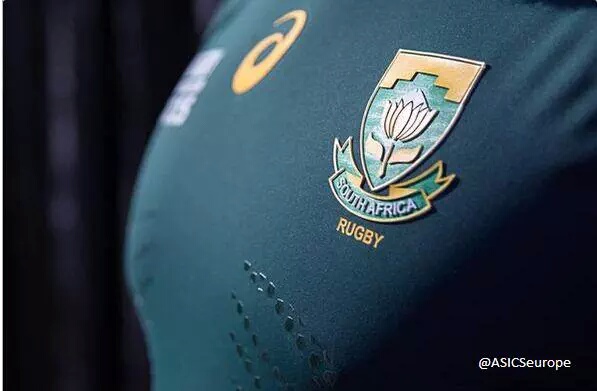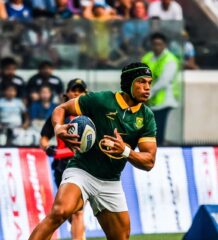Success is not an accident
A lot has been said about the new Springbok jersey, designed by ASICS, for the 2015 Rugby World Cup. The jersey was launched on Thursday to mark the 100 day count down to the biggest rugby showpiece.
The main discussion point is the absent Springbok logo on the front of the jersey, with the Rugby World Cup logo replacing the Springbok on the right, the ASICS logo in the middle and the national sporting emblem, the Protea, on the left.
The iconic Springbok logo has moved to the left sleeve, as in 2011, to conform to the contractual requirements of the tournament organisers. Only the Rugby World Cup logo, national sporting emblem and apparel sponsor is allowed on the front of the jersey. The Springbok will move back to the front of the jersey post World Cup.
The main aim of the jersey was to reduce the weight without compromising on the strength. The 2015 Rugby World Cup jersey will be the lightest ever worn by a South African team at a Rugby World Cup, making it 70 grams lighter than any previous jersey.
Jean de Villiers, Tendai Mtawarira, Eben Etzebeth, Bismarck du Plessis, Duane Vermeulen, Willie le Roux, Cornal Hendricks and Pat Lambie took part in an extensive testing programme in Japan to fine tune the final product.
The smooth surface will also make it harder than ever before to keep hold of in a tackle, while an area which has seen significant development after player insight is the Super-Grip silicone which features on the chest of the jersey.
The new Springbok jersey has been designed with the aim of reducing weight without compromising on strength and will feature three key technical areas.
As mentioned earlier the jersey will weigh 70 grams lighter than any previous jersey worn at a Rugby World Cup, which will reduce fatigue and allow players to play with more freedom.
It will also feature two combined materials with high tensile strength and a smooth surface making it harder than ever before to keep hold of in the tackle. The mechanical weave is designed to stretch, allowing players to bind to each other, but it also “snaps back” quickly making it hard for players to grip the in the tackle.
An area which has seen significant development after player insight is the Super-Grip silicone which features on the chest of the jersey. The grip is graduated down the ribcage rather than being high on the chest. Having graduated grip keeps weight down whilst also ensuring critical areas used for protecting the ball when running and catching maintain the most grip.
By repositioning the grip lower on the ribcage the players also feel a benefit in binding onto one another in scrum and maul situations.
ASICS made sure they covered all the bases when they designed the new Springbok apparel, even introducing compression socks to enhance their overall performance.
The socks work to improve blood flow, this alleviates fatigue, allowing players to play harder for longer as well as aiding recovery post-game.
ASICS socks also feature a moisture wicking yarn improving comfort and nano-glide technology in the heel and toe to stop blisters.
CEO of ASICS, Alistair Cameron, said they had put in hundreds of hours of hard work and meticulous planning to ensure the Springboks have a competitive edge at the Rugby World Cup.
“We are passionate about preparation and performance, as success is not an accident.”
“We have collected data and insights from the Springboks and created products that actively enhance their performance. Together with the South African Rugby Union we have developed a kit which will help the Springboks in their ultimate aim of lifting and keeping the Webb Ellis Cup,” said Cameron.
Written by Pierre Mc Leod
Related Posts
« Stormers win tackle battle in stalemate #FanUp Junior Boks and Aussies in World Rugby U20s top of pool clash »


















